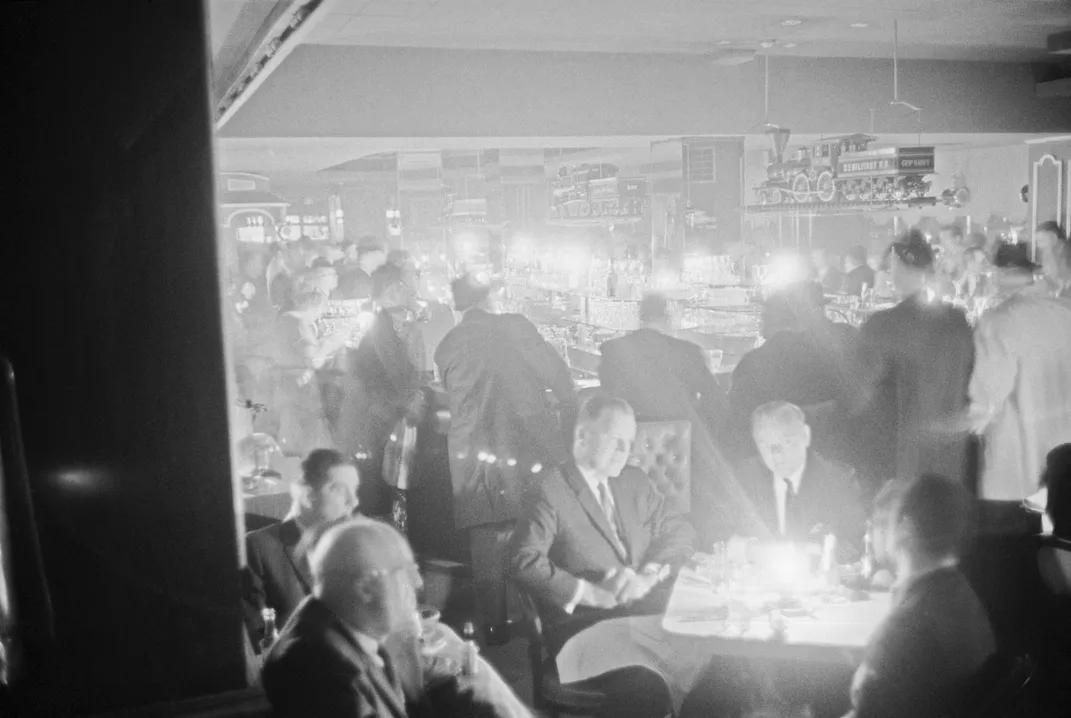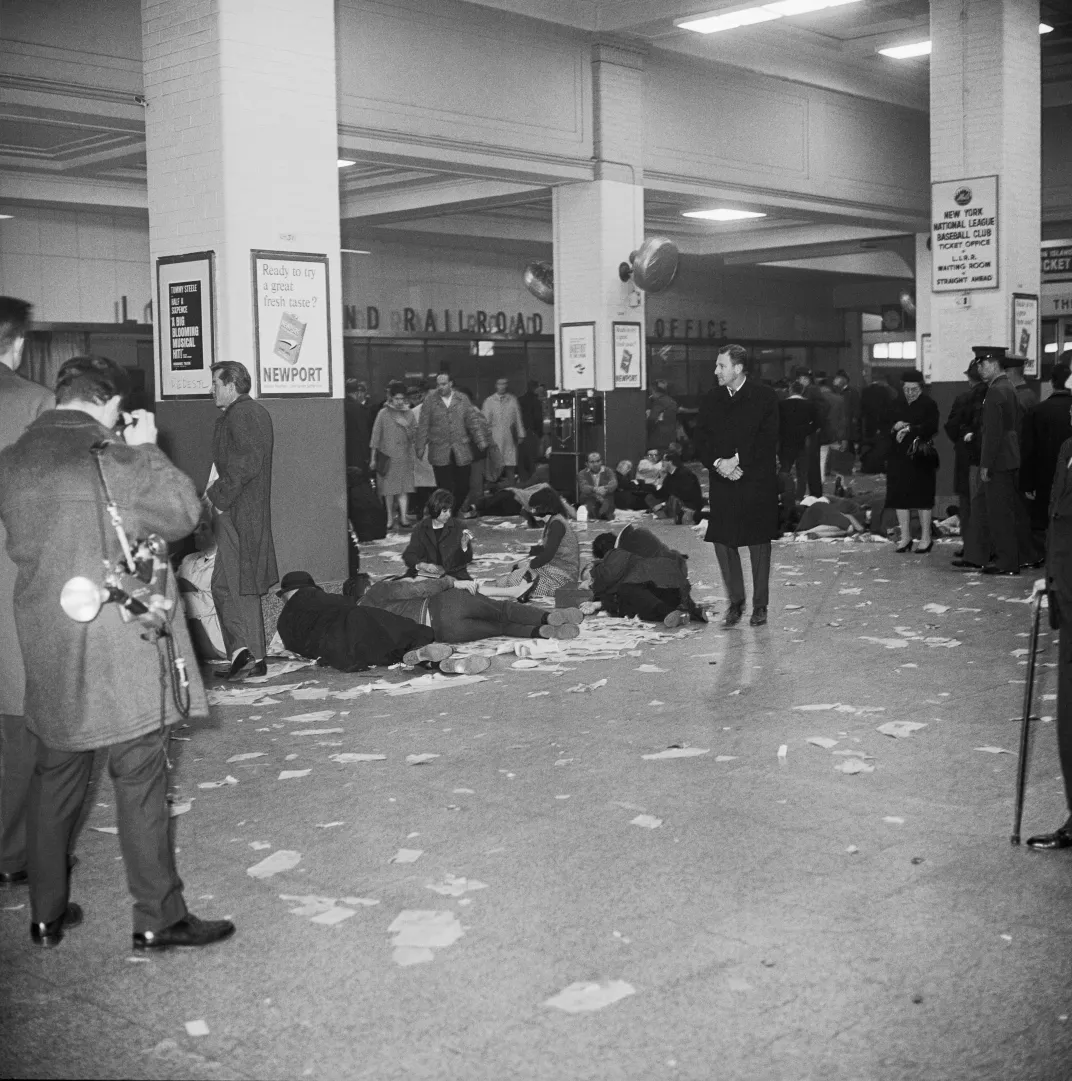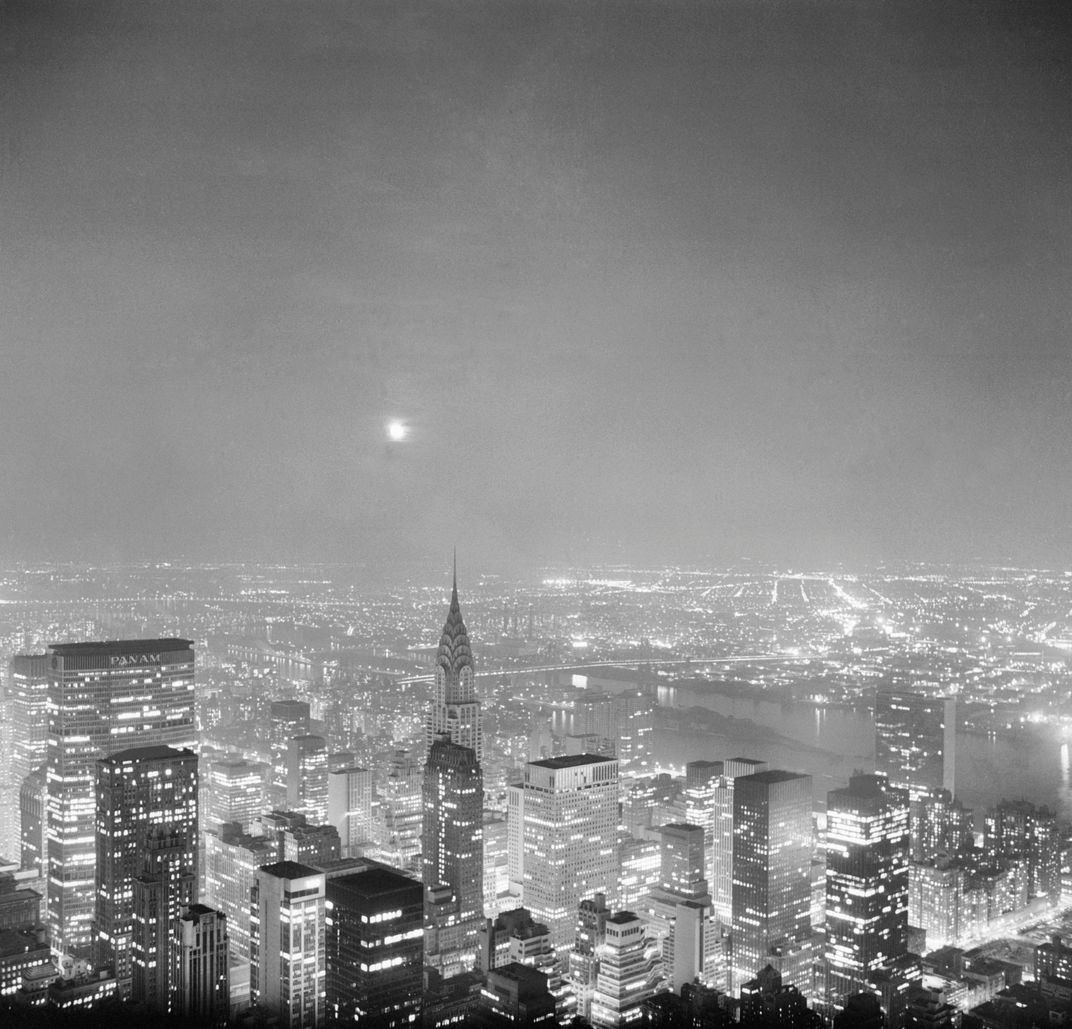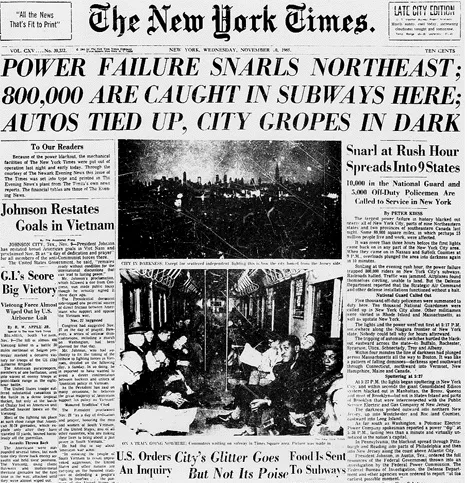When New York City Lost Power in 1965, Radio Saved the Day
How the news was reported on the day of the famous blackout
/https://tf-cmsv2-smithsonianmag-media.s3.amazonaws.com/filer/62/a5/62a59d06-87bf-4164-8613-c3fa6e966fac/u1494514.jpg)
About 5:15 p.m. Eastern time, half an hour after sunset, the lights began to flicker. And flicker. And flicker some more. The New York Times would later describe it as a “wild flickering for about a minute, like a silent alarm.”
Twelve minutes later, just as millions of New Yorkers were starting home from work, the city went totally black.
It was Tuesday, November 9, 1965, and the beginning of the biggest, most famous blackout this country has ever seen.
It wasn’t just New York City, either. Much of the northeastern U.S. had gone dark—parts of nine states plus three Canadian provinces. In all, some 30 million people were left stumbling around, trying to remember where they’d last seen their candles and matches.
In Manhattan alone, 800,000 people were stuck in subways, thousands more in elevators. Stoplights being out-of-order, ordinary citizens were now directing traffic. Doctors were delivering babies and performing surgery by flashlight.
For the New York-based news media, this was the story of a lifetime. Problem was, getting the story out it depended on the very commodity that made the news in the first place: electricity.
As Life editor George P. Hunt would observe in his magazine, "Here was an astonishing news story unfolding all around us, and here were we, the New York editorial staff, trapped in a skyscraper with no lights, jammed phones, and stalled elevators."
For the three big television networks, the nation’s most popular source of news, the timing could hardly have been worse. CBS, for example, was forced to shift its nightly broadcast to a back-up studio in Washington, while anchor Walter Cronkite, stuck in New York, delivered the blackout story by telephone. At NBC, anchor Frank McGee spoke from a makeshift studio, illuminated by what looked like a dinner candle.
Radio, however, rose to the occasion. Battery-powered transistor radios could still pick up the news, as long as stations had back-up generators to transmit it. One prominent magazine would later refer to the blackout as “the day of the transistor” and radio’s “greatest hour since D-Day.”
More than any other medium, it was radio that allayed people’s worst fears—and, in 1965, those could get pretty bad. The Cold War between the U.S. and U.S.S.R. remained icy, and movies about nuclear Armageddon like Fail-Safe and Dr. Strangelove, both released a year earlier, were all too fresh in memory.
“Was there anyone whose mind was not touched, at least fleetingly, by the conviction that this was it—that the missiles were on their way, and Doomsday was at hand?” The New Yorker, a magazine not known for hysteria, asked in its next issue.
Though no one knew exactly what had happened, thanks to radio, the government was able to reassure Americans about what hadn’t. The country was not under attack.
Meanwhile, the newspapers were doing what they could to get the story. At the time, New York City had six major daily papers, twice the number it has today. But only one, the Times, would put an edition out the next morning.
Working by the light of candles scrounged from nearby hardware stores, restaurants, and even churches, Times reporters and editors put together their November 10 edition, which a publisher in New Jersey, unaffected by the outage, graciously agreed to typeset and print. The result, as Arthur Gelb, a Times editor, recalled it in his memoir City Room, was a “bizarre ten-page edition, in Times style and Newark News type.”
Not surprisingly, the contents fell a bit short of the Times’ “All the News That’s Fit to Print” motto: a few pages of blackout and other news, the stock tables, a crossword puzzle, the bridge column, and some additional odds and ends. Plus, in a spirit of optimism, the next day’s TV listings.
The front-page headline practically told the story by itself:
Power Failure Snarls Northeast;
800,000 Are Caught in Subways Here;
Autos Tied Up, City Gropes in Dark
When the New York Post managed to get out an edition later in the day, it took a more minimalist approach. Against a photo of the darkened city, it asked the one-word question on most New Yorkers’ minds:
Why?
It would be another day before papers like the Daily News and Herald Tribune could bring out editions. The News, apparently embracing its inner beatnik, headlined its front page:
Nobody Digs
Power Flop
By then, at least, New Yorkers had some light to read their papers by. Power had been restored to most of the city by 7 a.m. on November 10, roughly 14 hours from the first flicker.
But questions about the calamity’s cause, plus a seemingly endless supply of human interest stories, would fill the papers for days. The picture that emerged was of a night of blackout but bonhomie, inconvenience but indomitable spirit.
There was, for example, the widely told tale of the 11-year-old New Hampshire boy who happened to whack a stick against a light pole at the precise moment the power failed, then scurried home, terrified that he had caused the whole thing.
And the story about the lights going out at Carnegie Hall in the middle of a performance by the pianist Vladimir Horowitz, who finished a piece of Chopin without missing a note.
And the one about the Scandinavian Airways pilot who saw the landing lights of Kennedy International Airport at one moment, glanced down for an instant to check his instruments, and looked up to find the runway had gone totally dark. (Though an estimated 500 flights had to be diverted because of the blackout, there were no accidents, a happy fact later attributed to a clear sky and a full moon.)
Other accounts involved great masses of people. Thousands had hunkered down for the night on the floors of train stations, hotel lobbies, and department stories, Macy’s alone fed an estimated 4,000 to 5,000 stranded shoppers in its cafeteria, after which many hit the sack in the bedding department.
Even criminals seem to have gotten into the spirit. While there were some reports of looting and other mayhem, the crime rate was reportedly down for the night, although some of that may have had to do with the increased police presence.
The blackout of 1965 would come to be known as the “good blackout,” in contrast, for example to its counterpart in July 1977, which is now remembered as an orgy of looting, vandalism, and arson—a symbol of New York at its most unruly.
Before the week was out, the official explanation for the blackout arrived. A faulty relay in Ontario—a device roughly the size of a light switch—had caused power stations throughout northeastern North America to shut down, one after another. This was, perhaps, the first time most Americans had heard the term “power grid”— the complex, interconnected system that provides the power to keep our refrigerators humming and our lights on (most of the time, anyway).
Though the blackout soon faded from the news, it retained a place in popular culture. Hollywood would turn it into an amiable farce called Where Were You When the Lights Went Out? with Doris Day and Robert Morse. Bewitched and other TV shows of the day would riff on the night. Years later, Mad Men creator Matthew Weiner would consider ending his series with an episode involving the blackout, before deciding that things would go better with Coke.
A report that an unusual number of babies were born nine months to the day of the blackout became an urban legend that still lives on—although a spoilsport University of North Carolina sociologist analyzed the data and convincingly debunked it in 1970.
To this day, however, the blackout remains beloved of UFO buffs. They cite numerous, well-documented reports of mysterious “fireballs” and other aerial oddities in the skies before, during, and after the event—including some in the vicinity of the Ontario power station. For the skeptics, a simple switch wasn’t enough to explain one of the wildest, weirdest nights of the 20th century, and still isn’t.
/https://tf-cmsv2-smithsonianmag-media.s3.amazonaws.com/accounts/headshot/greg2.png)








/https://tf-cmsv2-smithsonianmag-media.s3.amazonaws.com/accounts/headshot/greg2.png)